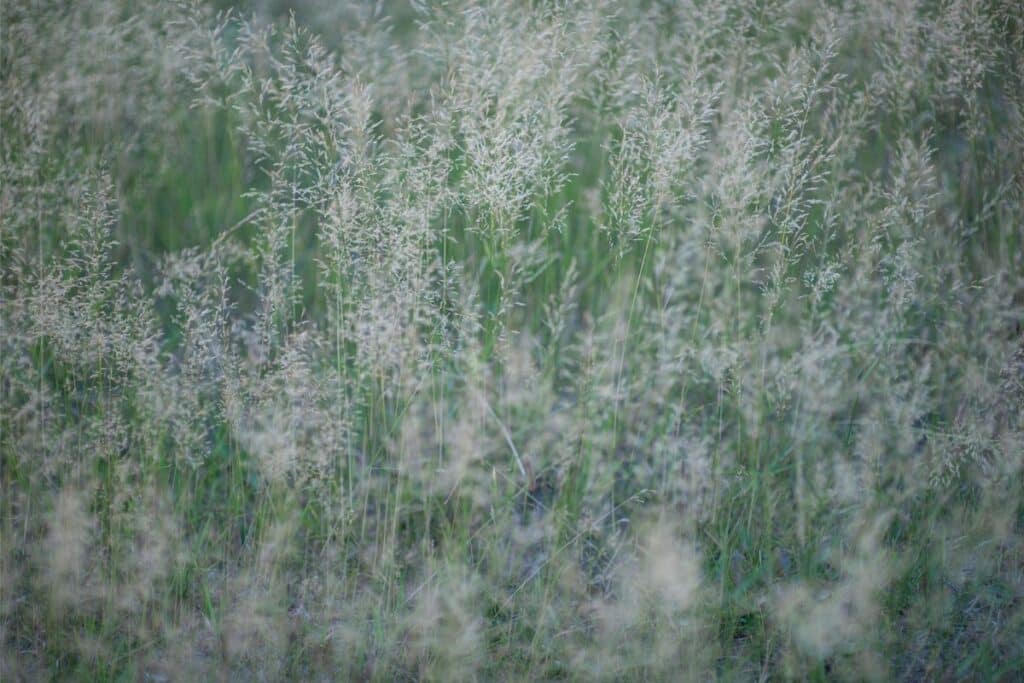Switchgrass (Panicum virgatum) is one of the most helpful grass species you can grow. This perennial grass variety is often planted as feedstock for animals or used as biomass for energy production. Some also use it for erosion control, and because it is so beautiful to look at, it is often included as an ornamental plant in decorative gardens.
This ornamental grass variety is often recommended as a replacement for invasive ornamental grasses because it isn’t just functional and non-invasive. The grass can be just as beautiful in landscapes.
If you want to grow switchgrass for decorative purposes or need it for agricultural applications, then learning all you can about it is best. This guide will share some great tips on planting and caring for this native prairie grass.
Plant Facts
| Scientific name | Panicum virgatum |
| Common names | Switchgrass, Tall panic grass, Tall prairie grass, Wild redtop, or Tatcchgrass |
| Family | Poaceae |
| Plant Type | Ornamental Grass |
| Height and Width | 3–7 ft. tall, 2–3 ft. wide |
| Origin | North America |
| Flower colors | Gold/yellow, pink, purple/lavender, or red/burgundy spikes |
| Foliage color | Blue, green, red/burgundy, gold/yellow, or orange depending on the season |
| Sun Exposure | Full sun or partial shade |
| Soil Type & pH | Well-drained clay or sand soil |
| Special features | Low Maintenance. Good for Containers. Use as an accent plant, border, privacy screen, or for mass planting. |
What Does Switchgrass Look Like?
The warm season grass can appear quite different at different growing stages, but it does offer lots of aesthetic charm throughout the year.
The growing season of these native plants usually begins in late spring, and they can continue to grow throughout summer. During its growing season, the grass will produce clumps of vivid green leaves with a fine texture and leaf blades reaching up to 6 feet tall. These clumps will slowly keep increasing in size as the rhizomes expand.
The ornamental grass will bloom in mid to late summer and produce whispy plumes on tall spikes. The blooms can appear different depending on the species. Flower colors include hues like white, golden, green, purple, or reddish tones, and the fine texture of the blooms will give the grass a delicate appearance.
Switchgrass becomes dormant in wintertime and will turn bronze or tan colored when it dies back for the winter. The dead clumps can be left in the garden because they stay upright and can offer lots of winter interest. The dead grass also has value to wildlife since grazing animals or bird life can still feed on the leaves, stems, or seeds.
It is best to cut back the dead foliage in early spring before the first new growth starts appearing.
Where Does Switchgrass Grow?
The native plant naturally grows in North America and ranges from Canada to Mexico. These grasses are commonly found in prairies and grow well in rocky areas or on river banks.
Even though tall panic grass is a native species, it can still be used for ornamental purposes. It will grow well in containers and can be helpful as a filler plant in the ornamental garden.
How to Grow Switchgrass
The switchgrass plant is easy to grow and care for. It is quite hardy and doesn’t require too much maintenance. Let’s look at the best way to grow this beautiful ornamental grass.
Propagation
When growing switchgrass, you can easily plant them from seed, but many gardeners prefer to propagate them by dividing the clumps and rhizomes.
These grasses form thick clumps that can become up to 3 feet wide. They benefit greatly from dividing because this will allow more air to circulate through the clumps and help prevent dead patches in the middle of the clump.
You can lift the rhizomes from the soil to propagate this grass and cut the root system into smaller bits. Remove dead plant matter and replant them in the soil.
Keeping the soil moist for the first few days after you plant switchgrass is best.
Soil
This grass variety is quite flexible. It will take well to any well-drained soil, including sand, clay, or loam soil types. The grass will flourish if you grow it in soil rich in inorganic matter.
Pruning
There is no need to prune the grass throughout the year. In fact, allowing it to flower and seed is good for wildlife because the seeds can be eaten by birds.
Gardeners usually wait until after the winter before pruning the dead foliage because the golden brown color of the leaves will add lots of winter interest to your garden spaces and can be great for keeping your beds full.
You can prune the grasses by cutting them off a few inches above ground level during early spring so the new growth can flourish.
How to Care for Switchgrass
Once you have established your switchgrass, taking good care of these plants will be pretty easy because they don’t require too much maintenance. Here is a quick look at how to take care of switchgrass.
Water
These beautiful grasses will become drought-tolerant once they are established and mature. During the first year of planting, they must be watered at least once a week. When the roots have been established, they can survive dry spells.
In particularly hot and sunny regions, you should water these plants weekly, or their growth can become stunted.
Sunlight
The warm season grass requires plenty of direct sunlight to grow well. It is best to plant this prairie grass in full sun because it prefers warm soil and flourishes when it receives more than 6 hours of direct sunlight per day.
The grass can be planted in partial shade in particularly warm regions with 2 – 6 hours of direct sunlight.
In deep shade positions, the growth of these grasses will be stunted, and the grass will start to flop over. It also won’t produce blooms or seeds if grown in the shade.
Temperature and Humidity
This grass variety can be planted in USDA zones 5 to 9. Because it is a deciduous species that becomes dormant for winter, it can tolerate colder temperatures.
This grass will need warm temperatures during its growing seasons because its growth is stunted if the temperatures drop below 60 degrees F.
Even though switchgrass can tolerate lots of heat, it will also stop growing at temperatures over 95 degrees F, so it is best to grow it in partial shade in extremely warm regions.
These ornamental cultivars can withstand relatively high humidity levels, but because they are drought tolerant, they typically prefer dryer climates.
Fertilizer
Switchgrass shows little response to fertilizer application, meaning fertilizing your grasses can waste your time and effort.
If you want the grass to grow well, you can position it in soil rich in organic matter or use potting soil in garden beds or containers.
You can add some phosphorus to the ground during the growing season in poor soil conditions.
Pests and Diseases
This fodder grass can be vulnerable to a number of pests and it can also be damaged by over-feeding from grazing animals. Here is a quick look at some of the most common pests that can infest the grass from time to time.
Fungal Diseases
These grasses can become vulnerable to a number of fungal diseases including rust, smuts, leaf spots, root rot, and others. Fungicides can be used to treat these diseases and gardeners can prevent these diseases by allowing the grass to dry out completely between watering and by avoiding moisture on the leaves.
Grasshoppers
Grasshoppers are known to feed on switchgrass and can cause a lot of devastation if there is a particularly large infestation. The severity of this dreaded infestation can vary because the grasshopper populations can greatly vary.
Aphids
Aphids are sap-seeding insects that love to feed on young stems and leaves. They can hinder and mutilate new growth and severe infestations can kill your plants. Aphids are usually controlled by pesticides or predatory insects like ladybugs.
Leafhoppers
Leafhoppers enjoy feeding on switchgrass and can cause pale specks all over the leaves. They can also cause blackish mold growth on foliage. These pests are usually removed with pesticides or by clearing out infected plants.
Blister Beetles
Blister beetles can also attack your ornamental cultivars and can cause a lot of clipping on leaves and stems. These pests are usually eliminated by applying a dust insecticide.
Stem Borers
Stem borers are a type of insect lava that love to devour switchgrass stems. They can be difficult to spot because they bore into the stem and dwell there while feeding. These arthropods can be avoided by cutting off invested growths and they are challenging to kill with pesticides.
Wireworms
Wireworms enjoy feeding on switchgrass rhizomes and can cause your beautiful grasses to die. These infestations can be difficult to detect because they dwell underground. They are also difficult to eradicate because insecticides don’t have much effect on them.
Switchgrass Companion Plants

Switchgrass can be planted alongside many different plants because the delicate foliage will add lots of texture to your garden and it can be a terrific backdrop for ornamental plants.
In agricultural settings, the grass is often grown with other food crops like barley, wheat, and oats because it is very practical for creating high-quality grazing fields for livestock or wildlife.
If you are using switchgrass in ornamental gardens, then you can try pairing it with flowering species like New England asters, firetail mountain fleece, globe thistle, or Siberian irises. The grass is great for creating a strong backdrop so these flowering species can stand out. Shrub companions can also be paired with the grass to create showy hedges.
Switchgrass Landscaping Ideas
This versatile grass can be used in many different ways to enhance the aesthetics of landscapes. Here is a quick look at some of the best ways to use switchgrass if you want to create beautiful spaces.
Grazing Fields or Prairies
Switchgrass can look charming if they are mass planted on large fields. The mass plantings will create a wavy effect on large landscapes and are sure to create spectacular sunset scapes during fall and winter when the foliage transforms into golden hues.
These mass plantings are not just beautiful, they can also be very functional since they can be used as food sources for grazing livestock and wildlife.
Borders or Privacy Screens
Switchgrass is quite tall and perfect for creating a privacy screen for your garden spaces. The grass can also be used to create a beautiful border alongside walls or driveways. Some landscapers enjoy mixing this beautiful grass with other plant species to create showy mixed border designs.
Rocky Gardens or Xeriscaping
The grass plumes are great for softening up the appearance of rocky gardens. You can pair this soft textured grass with flowering ornamentals like lavender to create interesting and water-efficient spaces.
Common Varieties and Cultivars
There are quite a few different varieties or cultivars of switchgrass that can all look striking in landscapes. These varieties can vary in height, flower color, and foliage color. Here is a quick look at some of the most common ornamental cultivars that you can consider for a more beautiful garden.
- ‘Blue Tower’
- ‘Cloud Nine’
- ‘Northwind’
- ‘Prairie Fire’
- ‘Prairie Sky’
- ‘Thundercloud’
- ‘Dallas Blues’
Conclusion
Switchgrass is a very functional plant and a perfect ornamental grass to use if you want to create showy spaces that will also benefit natural wildlife populations or livestock. This grass is beautiful to look at, easy to grow, and pretty easy to care for.
We hope that you enjoyed our growing guide and that you can use the information here to grow vigorous switchgrass plums that will delight and thrill you all year round.







